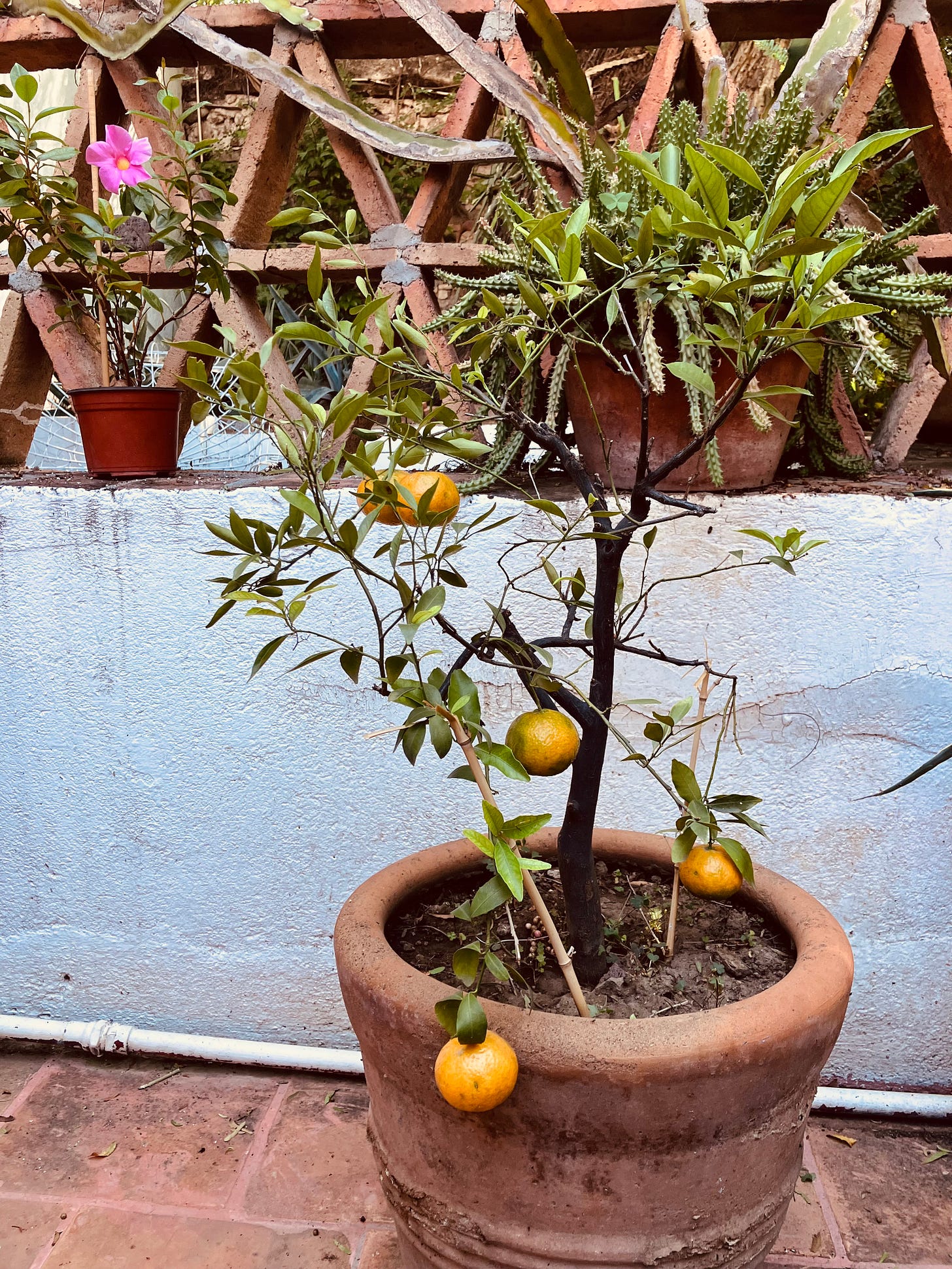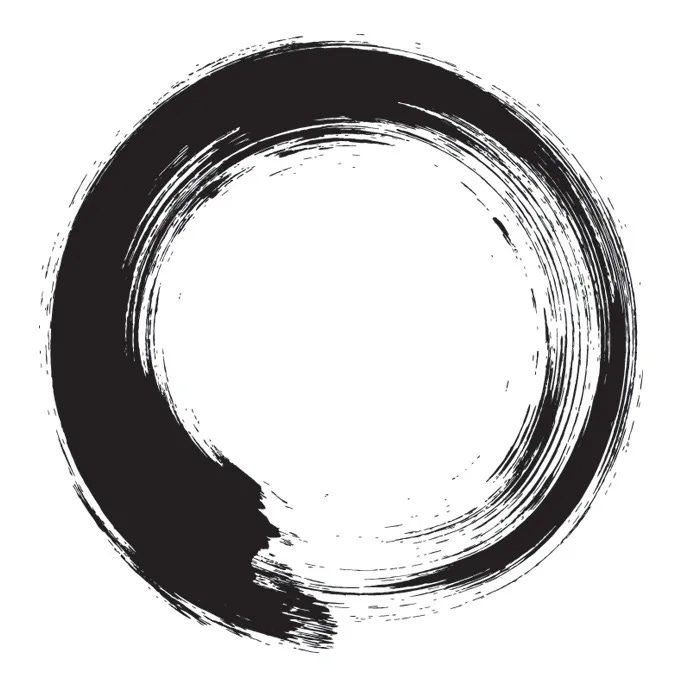Welcome to a new edition of Ensōnomics - a day early and maybe on the way to 2x a week. We start with an updated version of an article I wrote for another newsletter, 21 Degrees North, a latitude I’ve lived at in the past and am fortunate enough to live near today. If you followed a line along this latitude from the Morton Salt Factory on Great Inagua in the Bahamas through to Leon, Mexico, you’d eventually find yourself on Maui, which is as good a place as any to find yourself. We also take a look at leading like a gardener and build an on ramp to empathy. Plus it all begins with a poem. Enjoy.
Trees by W.S. Merwin / Published in The Compass Flower, 1977.
I am looking at trees.
They may be one of the things I will miss most from the earth.
Though many of the ones I have seen already I cannot remember,
and though I seldom embrace the ones I see,
and have never been able to speak with one,
I listen to them tenderly.
Their names have never touched them.
They have stood round my sleep.
And when it was forbidden to climb them,
they have carried me in their branches.
~~~~~~~~~~~~~~~
I love palm trees.
They are the trees of my childhood. I have harvested their fruit and mourned their passing. On quiet tropical nights, they were often the only sound I heard, other than my own thoughts. And though certainly no Jacaranda or Tabebuia, to me, they are the most beautiful trees on earth.
I was lucky enough to spend time years ago on Maui in a small upcountry town called Makawao. And fifteen minutes from Makawao, down winding Kaupakalua Road, nestled in the lush Peʻahi Valley, you’d find something extraordinary: a testament to the profound connection between art, land, and the invisible forces that shape us.
Here, poet W.S. Merwin cultivated not only a forest of palms, but something deeper - an ensō painted upon the land. If you ever have an extra 20 minutes and headphones, feel free to take a Walk in the Garden.
W.S. Merwin's daily life was a practice of devotion. He wrote each morning until the afternoon light shifted, then turned his hands to the soil. Over decades, this steady rhythm of creative labor and physical tending gave rise to almost fifty books of poetry and prose - as well as to a living community of palms, all the while nurturing an exhausted landscape back to fullness.
Merwin received many accolades during his career including two Pulitzer Prizes and the position of U.S. Poet Laureate. Yet it was his unseen daily work - the planting, the carrying of water by hand, the listening to wind and soil, that completed this arc of his life's creation.
When Merwin acquired his first three acres in 1976, the land was stripped bare, the soil leached and weary from decades of farming. Where others saw depletion, he saw possibility. “I had no idea what I was doing,” he said. “I just wanted to see if it was possible.”
And so he began, one tree at a time.
At first he tried to restore native Koa trees. None survived.
Undeterred, he listened closer, this time planting palms - propagating thousands from seeds he collected and nurtured himself. Over time, he transformed ruin into sanctuary. Nearly 3,000 palm trees now flourish there, representing over 480 species and 125 genera. Among them are rare and endangered beings: the Carpoxylon macrospermum from Vanuatu; the stilt-rooted Verscheffeltia splendida from the Seychelles and the flaming Cyrtostachys renda, whose scarlet crownshafts flash like torches among the green. Each tree became a mark of intention and each path a practice of presence. Each seed grew an unspoken poem.
To walk through the Merwin Palm Forest today is to step inside a living ensō.
The temperature shifts; the light softens and time thins out. Sun filters through the wide green fronds, dappling the ground in patterns that dissolve like breath. There is no formal symmetry here, no ornamental design. Instead, there is attentive imperfection, wholeness within the unfinished, just as the enso informs us - that creation is an act of spirit in motion, and that true beauty arises from connection, not control.
Merwin’s garden is a circle drawn not with brush and ink, but with seed and soil, rooted not in display but in practice. It remains open to change, to loss and renewal. And like an ensō, it is a gesture containing both the seen and unseen, the fleeting and the eternal.
In 2010, W.S. Merwin founded The Merwin Conservancy to safeguard this circle of life. Even after his passing in 2019, the work continues, in the shape of residencies for writers and artists, preservation of endangered species and lessons on stewardship and imagination.
“To live on the earth is to live in the shadow of loss,” Merwin once wrote. “But what we plant will outlive us.”
So today, I want to take a look at what I am planting. I have no land to steward at present, but like all of us, I will leave my own circle behind in a garden of choices, practices and silent devotions. Like Merwin, I have no idea what I am doing. I also believe everything is possible.
On Maui, the speech of ghosts can be heard in the air amidst the rustle of old fronds, the hush of distant tides and the murmur of growth taking root. So I will also listen closely within the borders of my own sanctuary and paint my own ensō, not for ghosts from the past or future, but for moments of today.
And in those moments of a new beginning, I trust I will be reminded of the poetry in every day and the chance to create a fresh circle.
Aloha mai.
Thinking Like a Gardener; A New Model for Leadership
When I first moved into my home, I found a neglected mandarin tree and began nursing it back to health. I was officially a gardener. Well, at least a container gardener.
Year one. A single mandarin.
Year two, cinco mandarinas.
This next October, quién sabe?
In an era where rapid results, quarterly returns, and instant gratification dominate the landscape, the idea of thinking like a gardener may seem quaint. But leadership today, especially the kind that endures and uplifts, demands a different model. It requires patience, vision, resilience, and a deep understanding of growth cycles. It may call for the mindset of a gardener.
A gardener knows that success doesn't happen overnight. Seeds are planted in faith, sometimes in barren soil, and tended to with consistency and care. In the same way, effective leaders recognize that people, ideas, and organizations develop over time, often invisibly at first. They understand that leadership is not about forcing outcomes but about creating the right conditions for growth.
Gardening teaches patience. A seed won't sprout merely because you hover over it or shout at it. Likewise, real leadership resists the temptation to apply constant pressure in hopes of accelerating results. Instead, it fosters an environment where individuals can find their own rhythms of growth.
Great leaders, like great gardeners, trust the process. They recognize that breakthroughs often happen underground long before any visible sign of progress appears. A new team member finding their voice, a new strategy taking root, or a new culture emerging all require patience, encouragement, and time.
Gardeners spend as much time nurturing the soil as they do the plants themselves. They know that unhealthy soil yields unhealthy crops, no matter how strong the seed. Leaders must tend to their organizational "soil" of culture, systems, values, and relationships that nourish the people they lead.
This might mean having the difficult conversations, celebrating wins, and ensuring that every team member feels seen and valued. Leaders who think like gardeners create psychological safety, room for innovation, and a shared sense of purpose. They work the soil before expecting the blooms.
When a gardener plants a seed, they envision the towering tree or colorful bloom it will become, even though at first all they have is dirt and hope. Leaders too must learn to see not only what is, but what could be.
A young, inexperienced employee may not yet have the skills for a major project, but under the right guidance and care, they could become a star performer. A struggling department may not seem like a place to invest time but with support, training, and resources, it could become a core strength.
Leadership, like gardening, is ultimately an act of faith: belief in unseen potential, and a willingness to invest in it before there is any guarantee of reward.
Gardeners know setbacks, unexpected frosts, invasive pests and drought are inevitable. They don’t quit the first time something goes wrong. They adapt. They cover the plants, fight off the pests and water religiously.
Leadership is no different. Projects fail and good people leave. Leaders who expect a linear path to success will be consistently disappointed. Leaders who think like gardeners, however, know that resilience and adaptation are part of the journey. They respond to problems not with blame and panic, but with care, creativity, and an eye on the bigger picture.
My friend Laura has an organic produce store called La Cosecha, translated in English, The Harvest. It is always a joy to be able to shop there.
There is no joy quite like a harvest - when after months of invisible effort, the fruits of the labor appear. For leaders, harvest moments might come in the form of a successful product launch, a promotion for a deserving team member, or a major breakthrough after a long struggle.
But gardeners also know the harvest is temporary. Seasons change. New cycles begin. Leaders, too, must avoid resting on their laurels. Each harvest is both a culmination and a new beginning - a chance to plant again even better than before.
Perhaps most importantly, gardeners think in seasons, not sprints. They balance periods of intense activity with periods of rest. Soil must lie fallow sometimes to remain fertile.
Leaders often push themselves and their teams to the brink, believing endless productivity is a sign of strength. In reality, sustainable leadership requires cycles of renewal offering time for reflection, learning, and reimagining. Leaders who think like gardeners build organizations that thrive long term, not just sprint to the next goal.
When we think of leadership as gardening, we shift our focus from control to cultivation. We move from a mindset of domination to one of stewardship. We understand that growth is a partnership between leader and follower, environment and individual, vision and effort.
In a world hungry for immediate returns, thinking like a gardener might be the most radical leadership goal of all. It reminds us that real change, development and success take time, care, and the willingness to believe in growth long before you can see it.
Leadership, when done in this spirit, is an act of cultivation, not control. It’s about tending to people, possibilities, and environments with care, patience, and vision.
If more leaders thought like gardeners, seeing potential before it’s visible, investing without guarantees, and valuing the slow beauty of true growth, perhaps we would build teams, companies, and communities that don't just survive, but thrive for generations to come.
How’s Your Empathy Meter These Days?
A quick look at the concept of Attribution Bias from Robert Greene.
“ When we make a mistake, we attribute it to circumstances that pushed us into doing it. But when others make a mistake, we tend to see it as a character flaw, as something that flowed from their imperfect personality. This is known as the attribution bias. You must work against this. With an empathic attitude, you consider first the circumstances that might have made a person do what they did, giving them the same benefit of the doubt as you give yourself.” - The Laws of Human Nature
The Endsō







